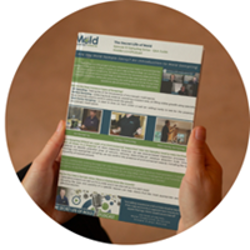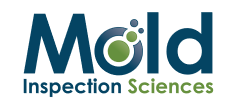Fungal Data Interpretation Part I
Effects of Vacuuming Carpets Before Mold Air Sampling
Effects of Vacuuming
Yesterday, I had the privilege of attending a webinar presented by Dave Gallup, co-founder of EMLab P&K. The topic of the webinar was Fungal Data Interpretation. The two-hour presentation covered many interesting topics that are relevant to mold inspection and testing companies as well as the general public that are facing mold problems in their home or business. One of the first points that Mr. Gallup made is the interpretation of the sample data that EMLab P&K provides must be combined with the on site mold inspection information. Trying to interpret fungal sample data from a mold inspection and testing project without also having field inspection information from a qualified mold inspector is highly problematic. In this blog entry I will focus on the first of several normal household scenarios that can drastically impact fungal sample data and could lead to incorrect interpretation of that data. Scenario - "Effects of Vacuuming" A group of EMLab P&K scientists studied the impact on fungal distribution in a normal home after the occupants vacuumed their carpets. Here is the data set:
- The first air sample was collected in the home before vacuuming the carpet.
- The air sample contained numerous types of mold spores. I will focus on three types: Basidiospores, Cladosporium, and Penicillium/Aspergillus types.
- All of the spores counts found in this first air sample were within "normal tolerances" -- they were all lower than the corresponding spore counts found in the outdoor baseline sample.
- The second air sample was collected during the act of vacuuming the carpet
- All of the spore counts were significantly elevated compared to both the outdoor control sample and the first sample collected before vacuuming.
- This is how the data looked:
- Basidiospores: before vacuuming ~70 spores/cubic meter | during vacuuming ~ 800 spores/cubic meter.
- Cladosporium: before vacuuming ~80 spores/cubic meter | during vacuuming ~ 1,000 spores/cubic meter.
- Penicillium/Aspergillus types: before vacuuming ~110 spores/cubic meter | during vacuuming ~ 1,100 spores/cubic meter.
- The third air sample was collected in the home 30 minutes after vacuuming.
- All of the spore counts were still elevated as compared to both the sample collected prior to vacuuming and the outdoor control sample, though not quite as high (about 50% as high as the during vacuuming sample) as the sample collected during vacuuming.
If the on site inspector did not notice that the carpet had been recently vacuumed (i.e. seeing the vacuum "tracks" in the carpet or notice the dusty smell or see the vacuum sitting out) or had not asked the homeowner if they had recently performed any housekeeping activities such as dusting or vacuuming, incorrect conclusions could have been made with respect to this project. For example the airborne Penicillium/Aspergillus types prior to vacuuming were ~80 spores/cubic meter. A half hour after vacuuming, they were ~500 spores/cubic meter which is approximately 6 times higher. In absence of the vacuuming, this could indicate a mold problem which would entail further investigation such as invasive investigation and could concern the homeowner. Armed with the knowledge that the client recently vacuumed, the inspector could either take that into consideration when analyzing the sample data or, better, not collect the sample for several hours after housekeeping activities. Many people place too much emphasis on the mold sampling aspect of our business. It is a useful tool, but it is only truly valuable in conjunction with the on site, visual inspection data. In my next posting related to Fungal Data Interpretation, we'll see the impact on the airborne fungal distribution when a moldy apple pie is tossed into the trashcan!
Our Free Mold Sampling Guides

With a comprehensive investigation and samples, a qualified consultant will have a clear picture of what’s going on in your property. Click below to download your free Introduction to Mold Sampling guide, a tool and resource for you to review, take notes, keep on hand, or share with friends and family.

